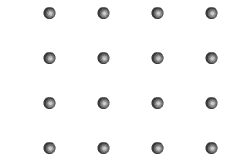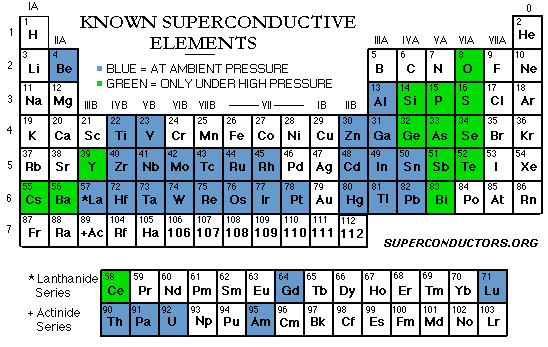|
Superconductivity is an unusual property of certain metals, alloys, and ceramics in which electrical resistance drops to zero when the temperature is reduced below a critical value (Tc), also known as the transition temperature. In other materials electrical resistance decreases as the temperature is lowered but does not disappear completely. But for superconductors the resistance is truly zero.
|
Electrical resistance primarily arises because free electrons moving through a material are scattered due to interactions with the lattice due to thermal vibrations. So, as in the graph above, all materials show a gradual decrease in electrical resistance with decreasing temperature. In superconductors below Tc, however, these scattering mechanisms are no longer effective and the electrons pass unimpeded through the material.
|
A second feature of superconductivity reasonably explained by BCS Theory is the Meissner effect - the complete expulsion of all magnetic fields from the interior of the superconductor. This creates a state of "perfect" diamagnetism, with susceptibility (χ) = −1, illustrated in the accompanying video. Superconducting diamagnetism arises from persistent "screening currents" that flow to oppose the applied field. It is therefore fundamentally different from the
diamagnetism of "regular" materials that results principally from electron orbital angular momentum. |
|
|
Approximately half of the known pure elements demonstrate low temperature superconductivity. For industrial use, however, the most important superconductors are multi-element alloys or ceramics. Superconducting windings for most human MR scanners are made from Nb-Ti; ultra-high-field animal scanners and NMR spectrometers typically use Nb3Sn; MgB2 is a promising new alloy for lower field instruments.
|
Advanced Discussion (show/hide)»
No additional material yet. Check back soon!
References
Ginsberg DM. Superconductivity. Encyclopedia Britannica on-line.
Superconduction.org website. (Good explanations of superconductivity and the latest news about room temperature superconductors and other advances in the field).
Bardeen J, Cooper LN, Schrieffer JR. Theory of superconductivity. Phys Rev 1957; 108(5):1175-1204. (The famous paper that established the "BCS" theory of superconductivity and earned the authors a Nobel Prize).
Ginsberg DM. Superconductivity. Encyclopedia Britannica on-line.
Superconduction.org website. (Good explanations of superconductivity and the latest news about room temperature superconductors and other advances in the field).
Bardeen J, Cooper LN, Schrieffer JR. Theory of superconductivity. Phys Rev 1957; 108(5):1175-1204. (The famous paper that established the "BCS" theory of superconductivity and earned the authors a Nobel Prize).
Related Questions
How are superconducting magnets constructed?
How are superconducting magnets constructed?



